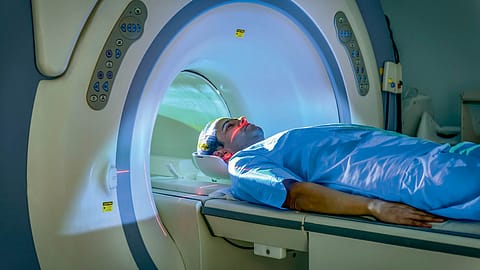India's medical tourism market to touch $58 billion in 10 years
Despite a temporary dip during the COVID-19 pandemic, the sector has rebounded strongly, supported by policy reforms, infrastructure investments, initiatives such as Digital Health IDs, and Ayushman Bharat, along with introduction of specialized visa categories such as the AYUSH visa.

India’s medical tourism market is set for a 12.3% CAGR growth in the next 10 years to touch $ 58.2 billion by 2035, up from $ 18.2 billion in 2025, a report prepared by the Federation of Hotel and Restaurant Associations of India (FHRAI), in collaboration with KPMG estimates.
Despite a temporary dip during the COVID-19 pandemic, the sector has rebounded strongly, supported by policy reforms, infrastructure investments, initiatives such as Digital Health IDs, and Ayushman Bharat, along with introduction of specialized visa categories such as the AYUSH visa, the report titled “Heal in India: Catalysing Medical and Wellness Tourism for a Healthier Global Future” notes.
The report points out that the number of medical visas issued by India touched 4.64 lakh in 2024, up from a pre-COVID level of 3.75 lakh in 2019. It had come down to 1.52 lakh medical visas during the pandemic period. “India’s medical value travel sector attracts patients from a broad spectrum of countries, reflecting its growing global reputation for quality and affordability”, it said.
According to the report, Kerala, Maharashtra and Delhi are among the States with high inbound wellness traffic and medical tourism traffic. While Kerala has been showcased as a destination for wellness-focused medical tourism, particularly in Ayurveda, due to its robust healthcare infrastructure, skilled workforce, and rich cultural heritage, Maharashtra has been highlighted for its efforts to develop and wellness and medical ecosystem through multispecialty hospital chains and wellness integration. The Delhi and adjoining NCR areas have been categorized as both a national and international hub for advanced medical care, particularly in organ transplants.
“India must lead not just in treating illness, but in promoting long-term wellness. With the right policy support, digital tools, and global outreach, we have the opportunity to become the world’s healing capital,” Someswara Koundinya, Director KPMG India (Sports & Tourism Practice) at KPMG India, said.
India attracts nearly 2 million patients from 78 countries, for a wide range of treatments (including elective treatments), with high demand in areas such as: cardiac surgeries, cosmetic surgery, ophthalmology, ayurveda and panchakarma therapies. Orthopedic procedures (like knee and hip replacements), dental care, fertility treatments (IVF), oncology, neurology, and minimally invasive surgeries also attract overseas patients, majority of them from Bangladesh, GCC nations, and Africa.
However, inadequate infrastructure beyond India’s metro cities remains a key challenge before Indian medical and wellness tourism sector. “Tier-II and Tier-III cities in India face mounting healthcare pressure, with over 40 million more residents expected by FY27 and Tier-III growth reaching 2.6% - well above the national average of 0.7%. Despite contributing 50% to India’s $ 216 billion healthcare ecosystem (FY23), these regions remain under-served by hospital chains and lack scalable infrastructure, transport systems, advanced equipment, and skilled personnel. Although 600 investment opportunities worth $ 32 billion exist, much remains untapped,” the report notes.
Recommended Stories
India ranks 10th globally in the Medical Tourism Index and 7th in wellness tourism, though its share in the global medical and wellness tourism segments are low. While global medical tourism market was pegged at $ 41.75 billion in 2024, wellness tourism was estimated to be $ 954.14 billion. While these two segments are expected to double by 2030 and 2034, respectively, India’s growth from a lower base will be much higher.
The report also proposes to elevate the existing National Medical and Wellness Tourism Promotion Board into a comprehensive national mission that facilitates strategic policy execution and inter-ministerial coordination. It calls for active involvement and cooperation among the Ministries of Health and Family Welfare, AYUSH, External Affairs, and respective state governments. The report wants the initial efforts to begin with a focus on states such as Kerala, Maharashtra, and Delhi to ensure scalable, transparent, and regionally tailored implementation.